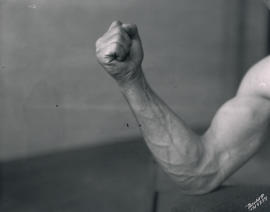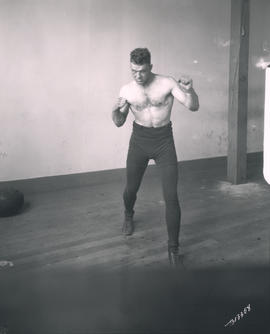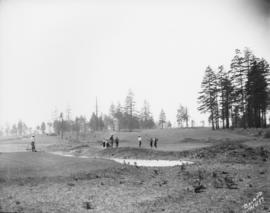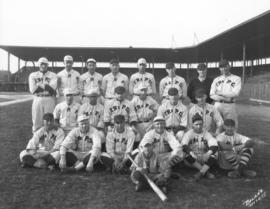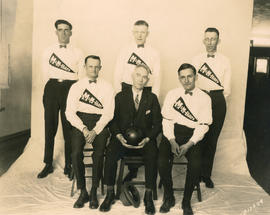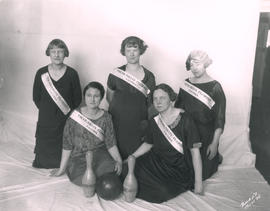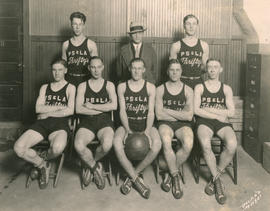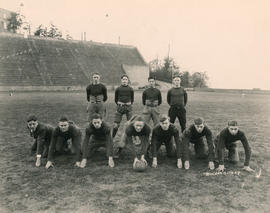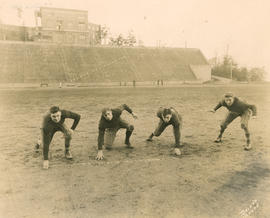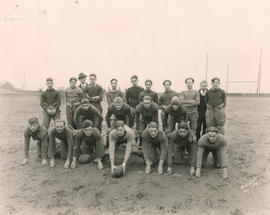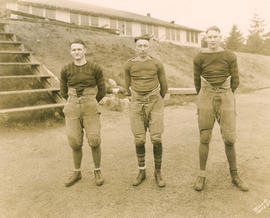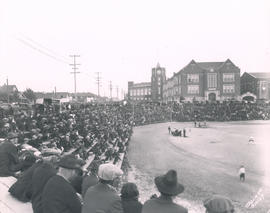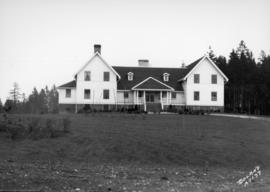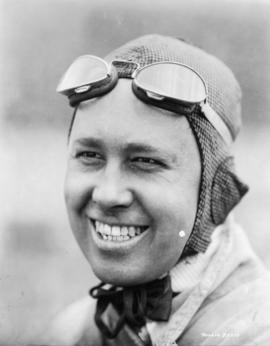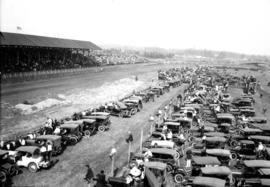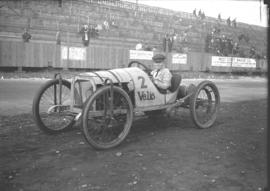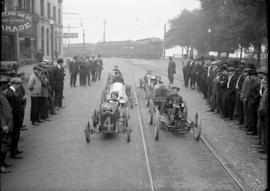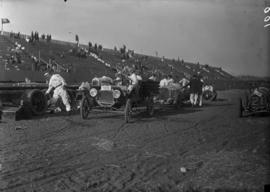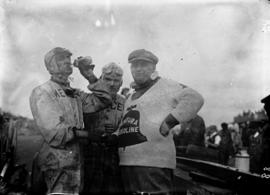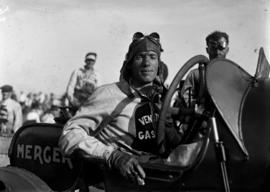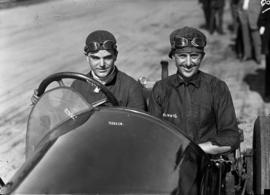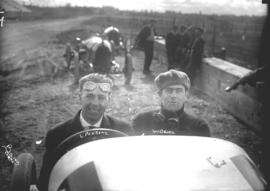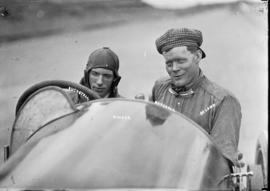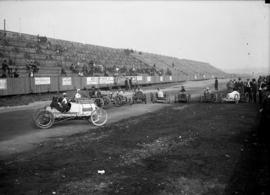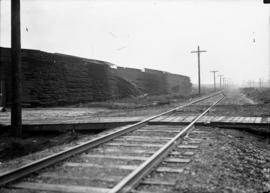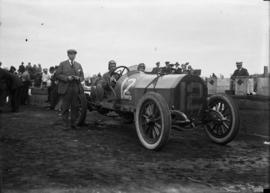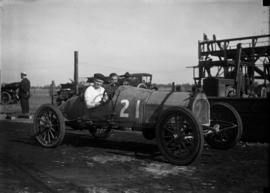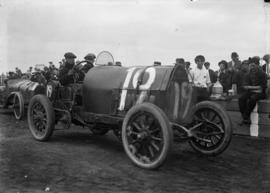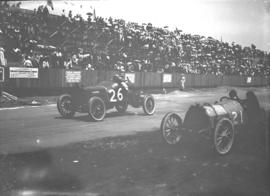Members of the Tacoma Railway & Power Company baseball team and their "mascot" stare stoically at the camera in an April 30, 1925, photograph. L-R back row (last names only given): Bonney, Rice, Kaperick, Pyfer, Hull, Fagon, James, Gordon (Captain). Middle row (L-R): Pryor, Arnold, Kendziora, Hendry, Berry, Billsborrow. Front row (L-R); Mynhier, Williams, Kennedy, "Jargo Jr."-mascot, Purcell, Wharton, Berg. Behind them are the covered stands of Athletic Park, located on Sprague Avenue between 14th & 15th Streets, where fans could watch games in comfort. The TR & P team competed in the 6-team Commercial League in 1925; they were joined by teams from the Rhodes Bros., City Lumber, American Institute of Banking, Harmon & Co. and Washington Coop. Egg. The Commercial League opened their 1925 season at Athletic Park on April 27th, matching up the previous year's champs, the TR & P with the league runner-up, Rhodes Bros. This time Rhodes Bros. came up winners in seven innings with a 5-2 score. (TDL 4-26-25, C-2, 5-2-25, p. 6; TNT 5-19-25, p. 17) G53.1-038 TPL-10076
Baseball players--Tacoma--1920-1930;
